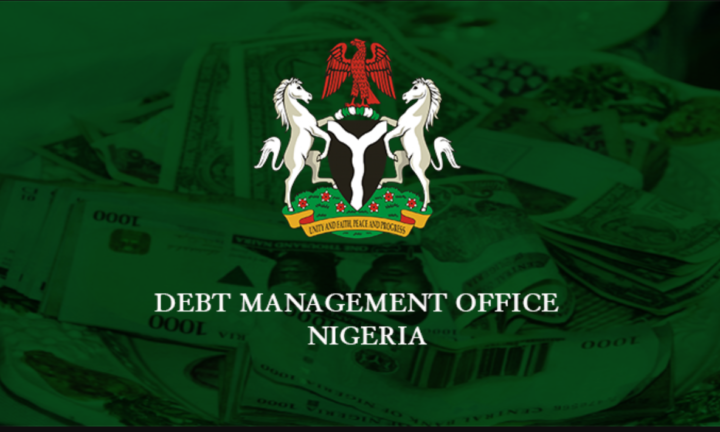Nigeria’s total public debt has reached N152.4 trillion as of June 2025, according to data released by the Debt Management Office (DMO). The report confirms that the World Bank remains the country’s biggest external creditor, with a total of $18.04 billion in outstanding loans—about 38 percent of Nigeria’s total external debt.The figures show that Nigeria’s debt increased by N3.01 trillion between March and June 2025, marking a 2.01 percent rise from N149.39 trillion recorded in March. In dollar terms, the total debt stock climbed from $97.24 billion to $99.66 billion, reflecting the continuous pressure of exchange rate depreciation and new borrowing to finance fiscal gaps.
A closer look at the debt structure reveals that external debt now stands at $46.98 billion (approximately N71.85 trillion), while domestic debt accounts for N80.55 trillion. The multilateral category—comprising institutions like the World Bank and African Development Bank—accounts for the largest share of external loans at $23.19 billion, representing 49.4 percent of the total. The World Bank alone holds $18.04 billion of this figure, reaffirming its dominant role in Nigeria’s financing landscape.

Bilateral debt, owed to individual countries, stands at $6.20 billion, with China’s Export-Import Bank contributing the largest portion at $4.91 billion. Commercial debt, which includes Eurobonds and other market instruments, makes up $17.32 billion, equivalent to 36.9 percent of the total external debt portfolio.
Domestically, Nigeria owes N80.55 trillion, reflecting an increase of N1.79 trillion within three months. Federal Government bonds remain the largest component, amounting to N60.65 trillion or 79.2 percent of domestic debt. Treasury bills follow with N12.76 trillion, while Sukuk bonds stand at N1.29 trillion. Other smaller instruments include savings bonds, green bonds, and promissory notes.
The Federal Government shoulders about 92.6 percent of the total debt, amounting to N141.08 trillion, split between N64.49 trillion in external liabilities and N76.59 trillion in domestic obligations. Subnational governments—comprising the 36 states and the Federal Capital Territory—are responsible for the remaining 7.4 percent, totaling N11.32 trillion.
Despite the continuous rise, the DMO maintains that Nigeria’s debt remains sustainable under current conditions. However, analysts have raised concerns over the rapid accumulation of public debt, warning that rising servicing costs could crowd out capital and social spending. Nigeria’s debt servicing obligations already consume a significant portion of government revenue, often exceeding 90 percent in certain quarters, leaving little room for developmental projects.
Experts have also cautioned that the heavy reliance on commercial borrowing, particularly through Eurobonds, exposes Nigeria to exchange rate and interest rate risks. The depreciation of the naira has further inflated the cost of servicing foreign-denominated debts, worsening fiscal vulnerabilities. With global borrowing costs rising due to higher international interest rates, Nigeria’s debt obligations could become increasingly expensive to manage.
Economic analysts recommend that the Federal Government strengthen domestic revenue mobilization, curb excessive borrowing, and prioritize concessional financing options. They also advise cutting down on non-essential spending and improving transparency in debt reporting to maintain investor confidence and avoid the risk of debt distress.
The recent debt report also underscores the need for Nigeria to accelerate structural reforms aimed at improving productivity, expanding exports, and diversifying the economy away from oil. With the current revenue base still heavily dependent on oil proceeds, fluctuations in global oil prices continue to influence Nigeria’s borrowing needs and fiscal sustainability.
Observers note that while borrowing is not inherently bad, the purpose and efficiency of debt utilization remain key. Investments funded through loans should yield tangible economic returns—such as improved infrastructure, job creation, and industrial growth—to ensure long-term repayment capacity. Without this, the country risks falling into a debt trap that could stifle growth and development.
In the coming months, fiscal policymakers are expected to revisit the medium-term debt strategy to strike a balance between development financing and sustainability. There are calls for stricter debt management practices and improved coordination between fiscal and monetary authorities to reduce Nigeria’s exposure to external shocks.
As the nation continues its efforts to stabilize the economy and achieve sustainable growth, the latest figures highlight the delicate balance between borrowing for development and maintaining fiscal discipline. The World Bank’s significant share in Nigeria’s debt profile emphasizes both the country’s reliance on concessional funding and the urgent need for prudent fiscal management to ensure future stability.
Support InfoStride News' Credible Journalism: Only credible journalism can guarantee a fair, accountable and transparent society, including democracy and government. It involves a lot of efforts and money. We need your support. Click here to Donate
